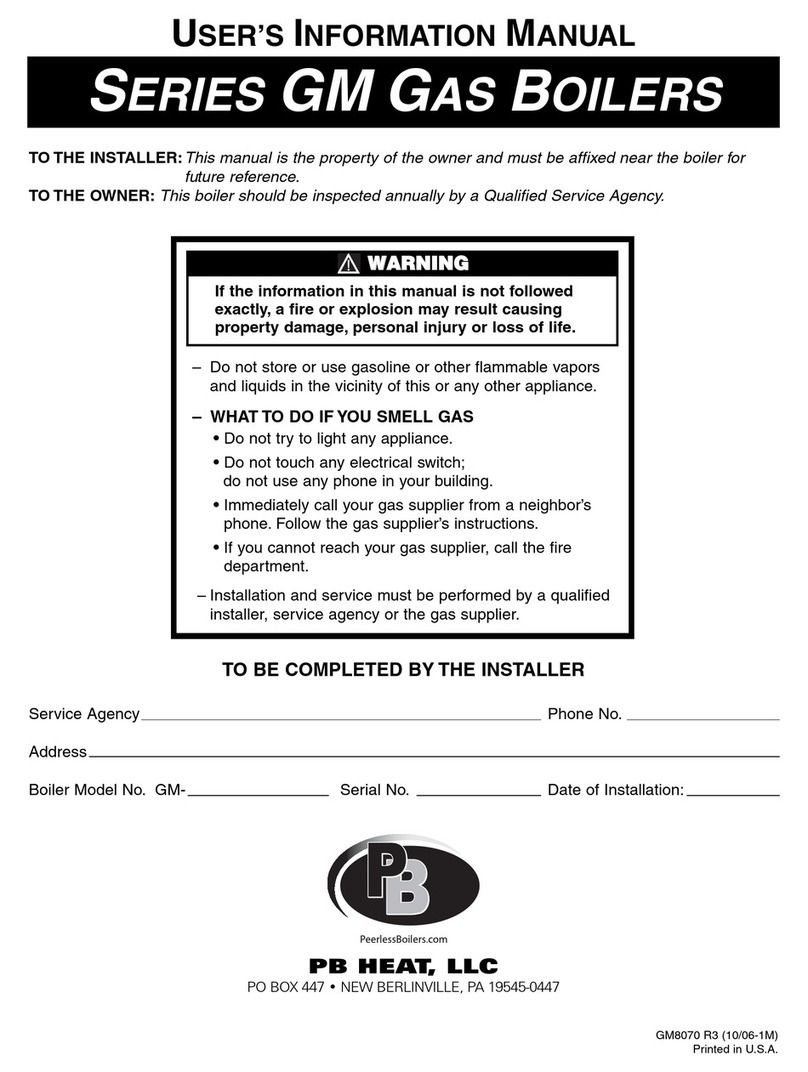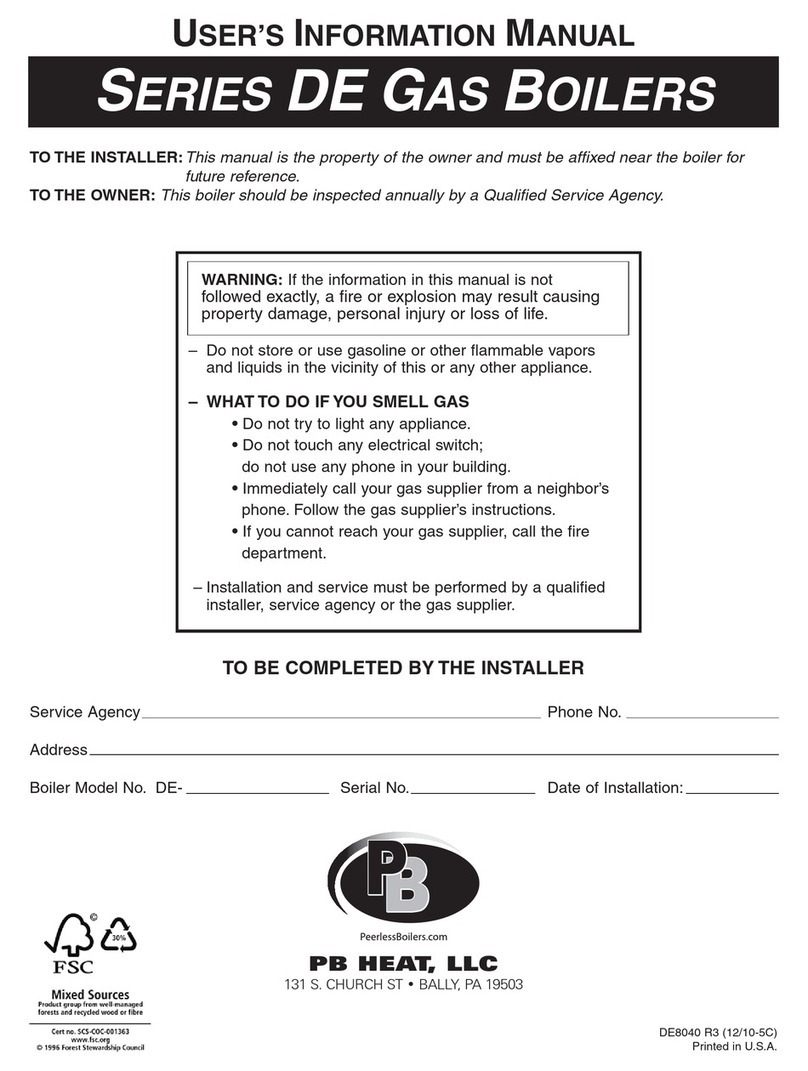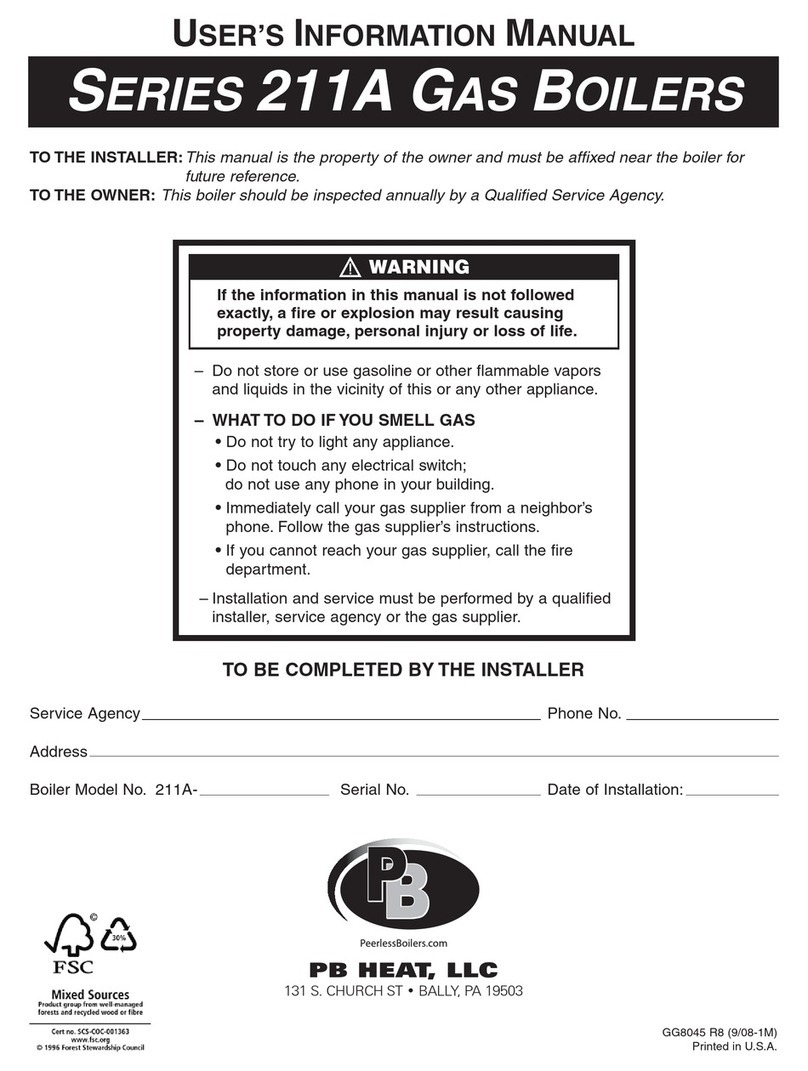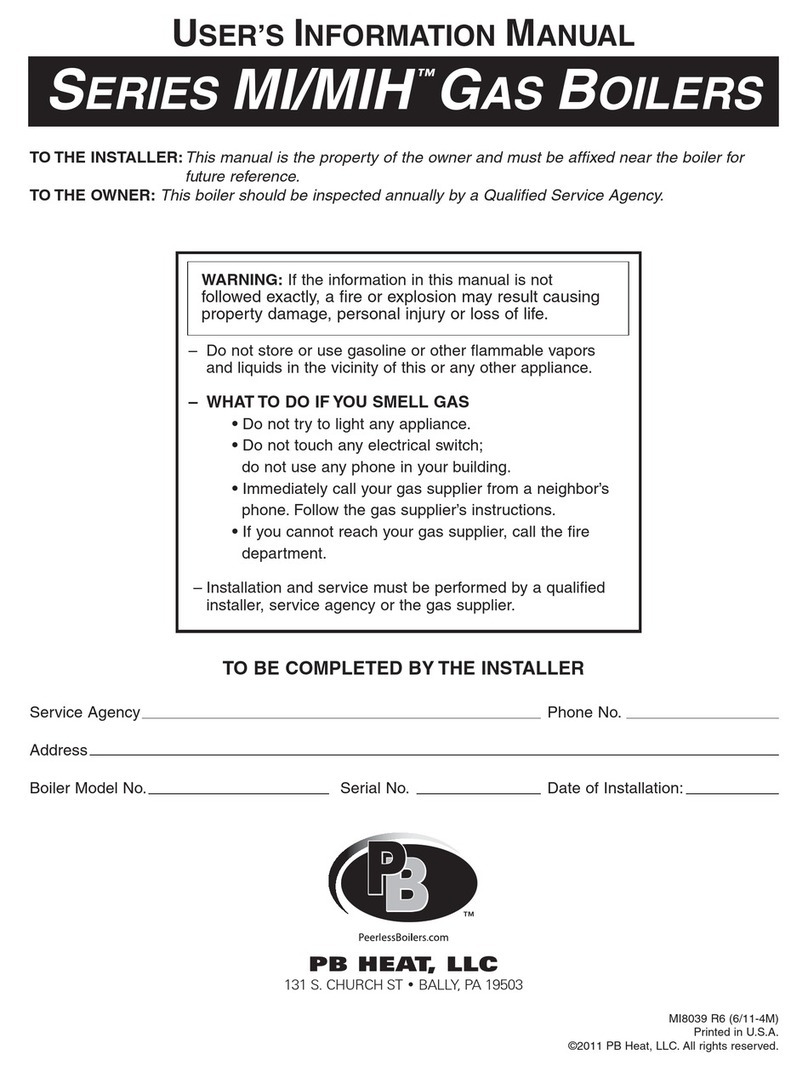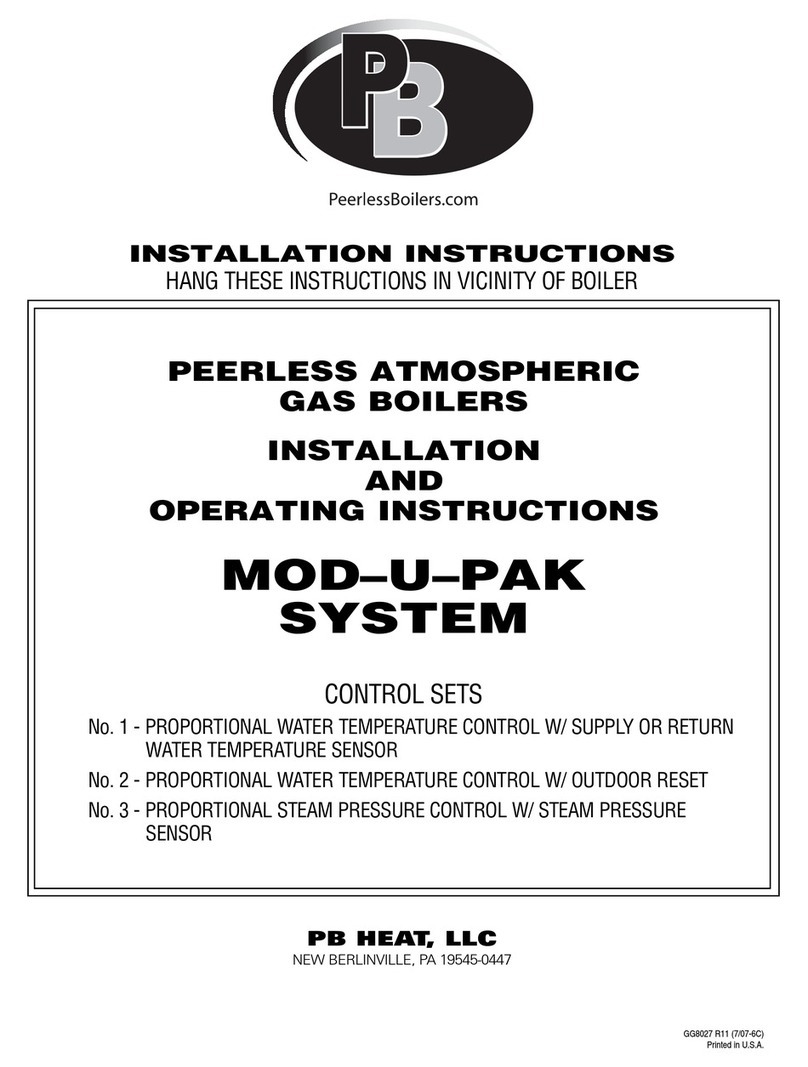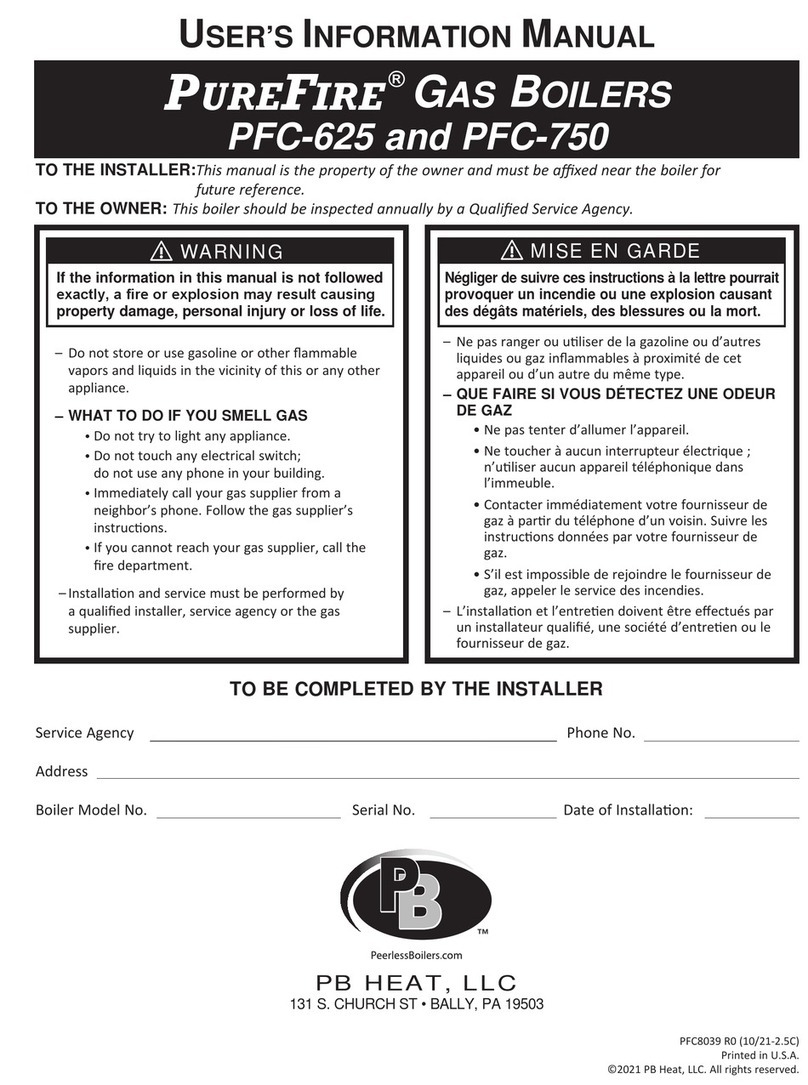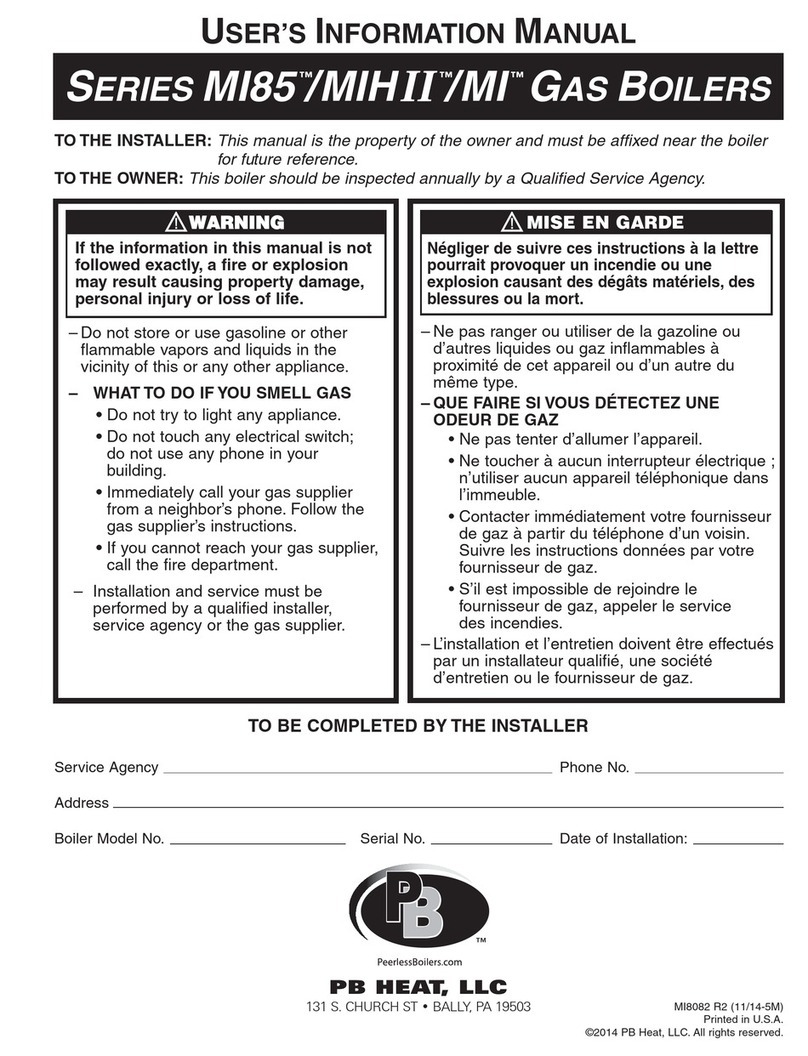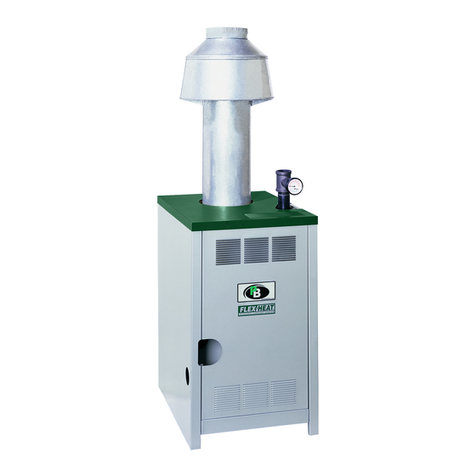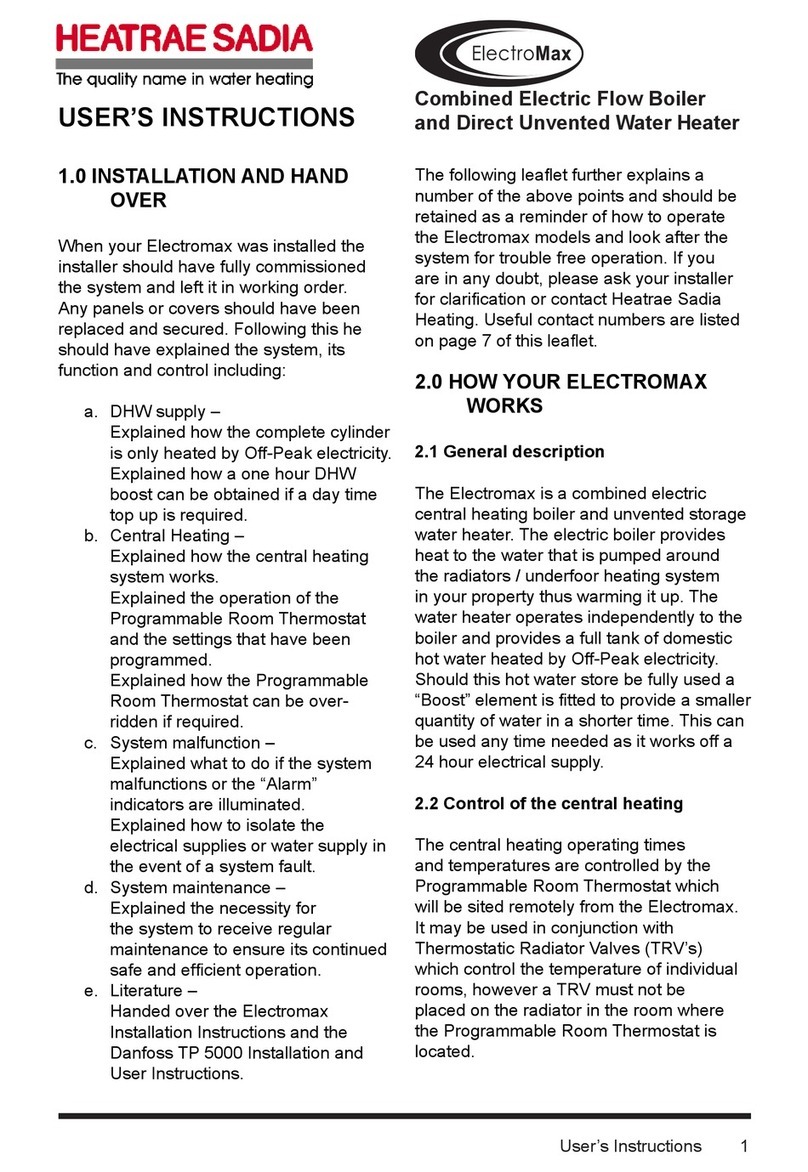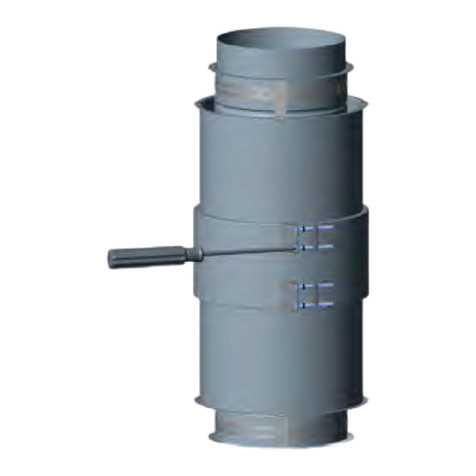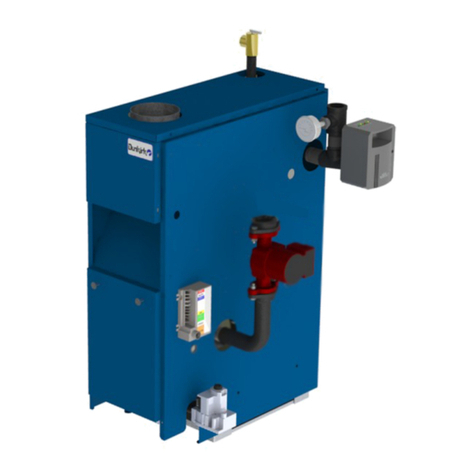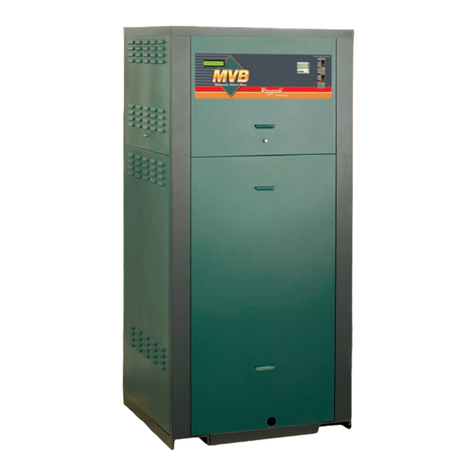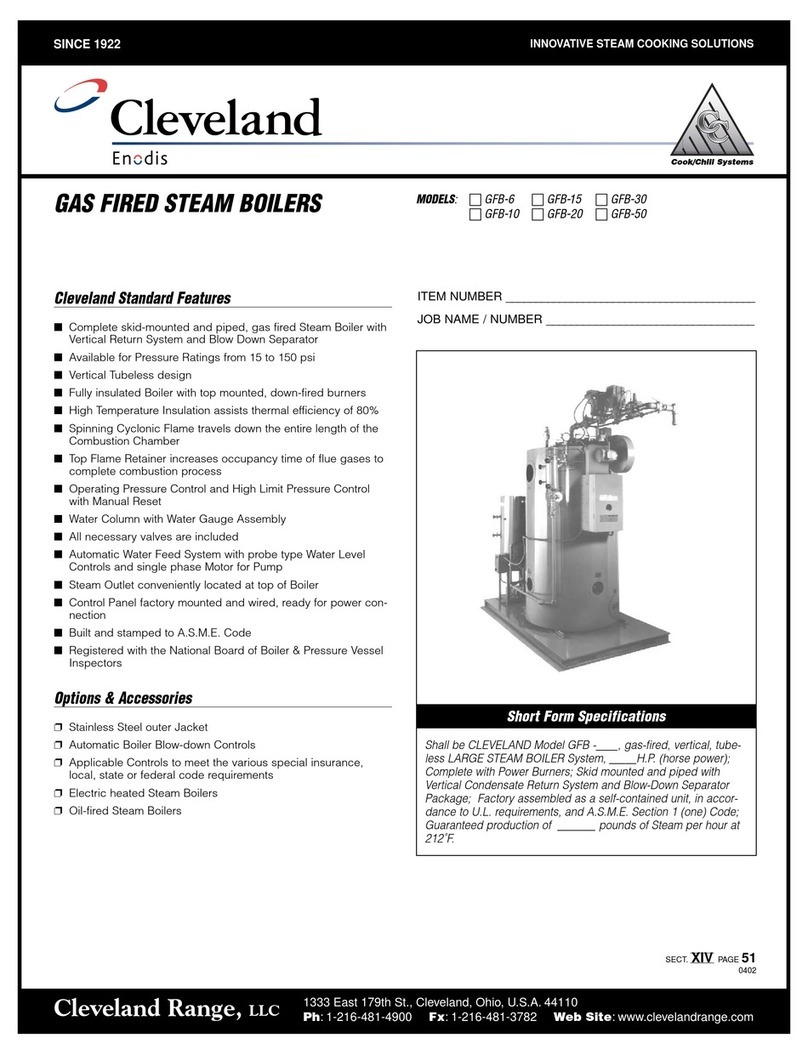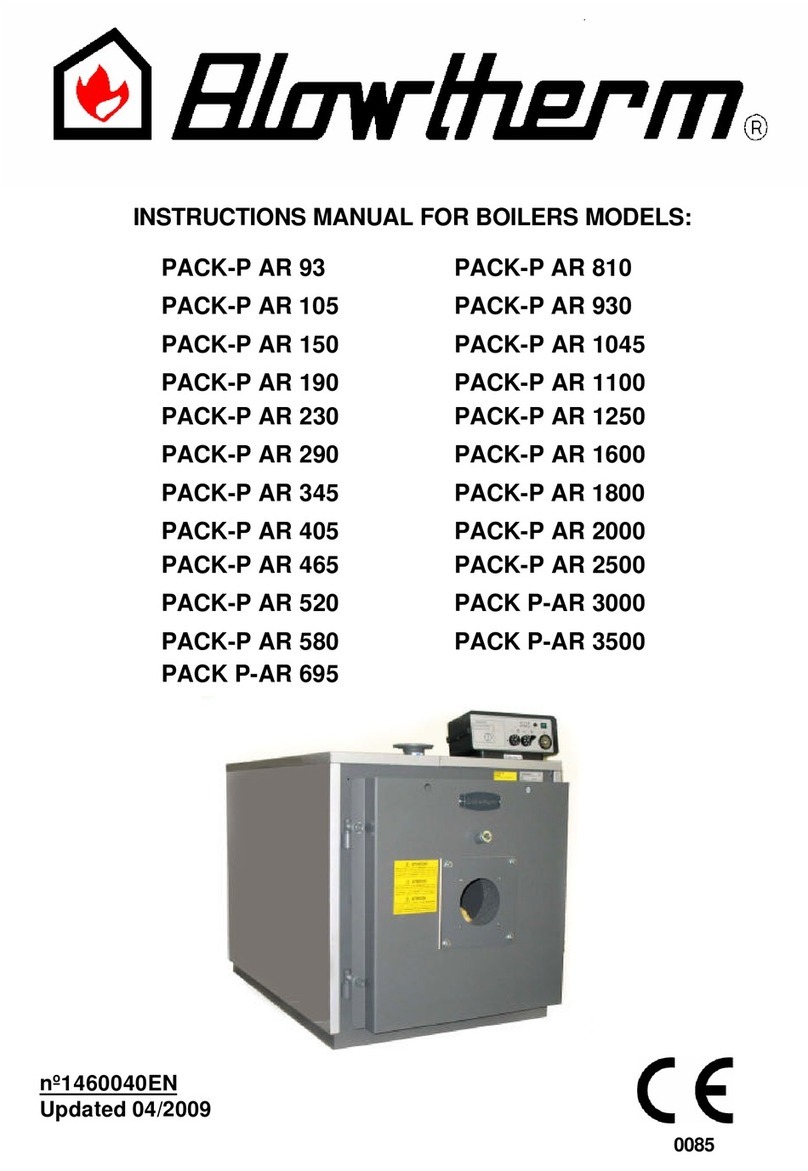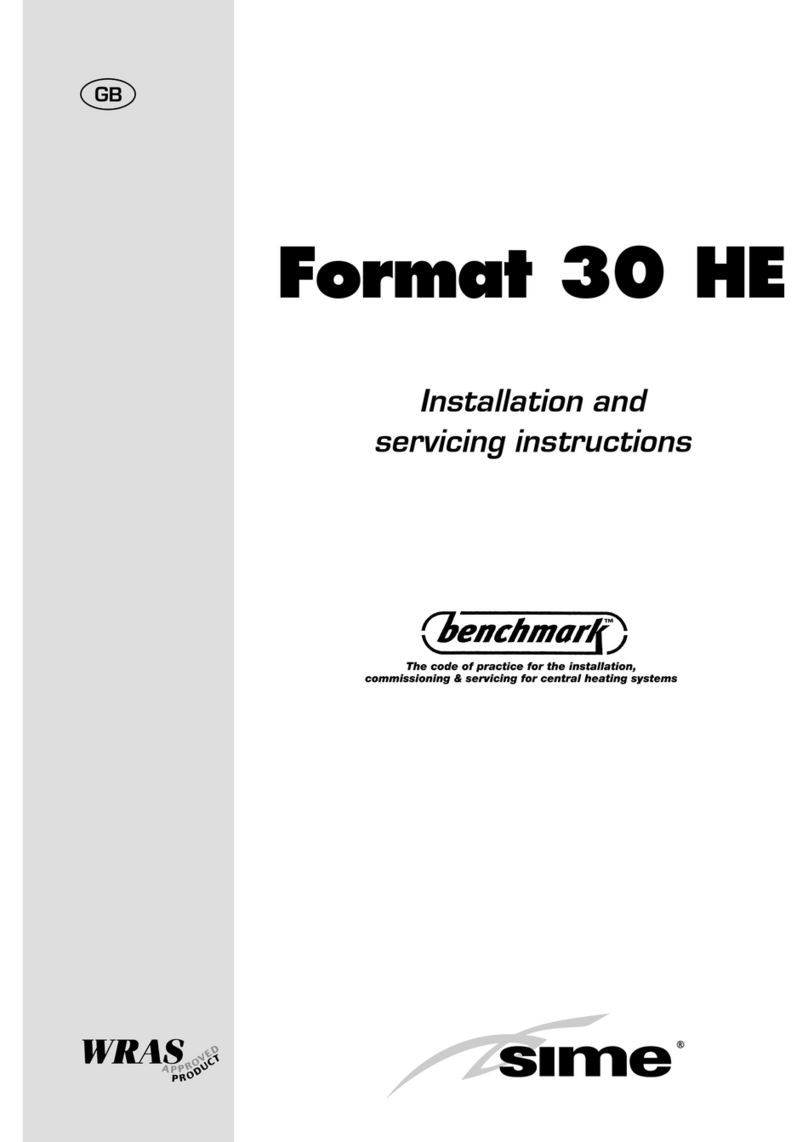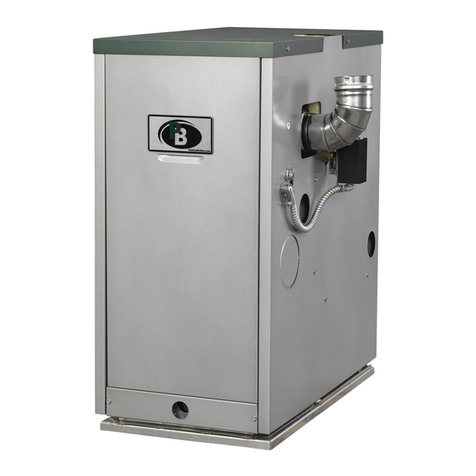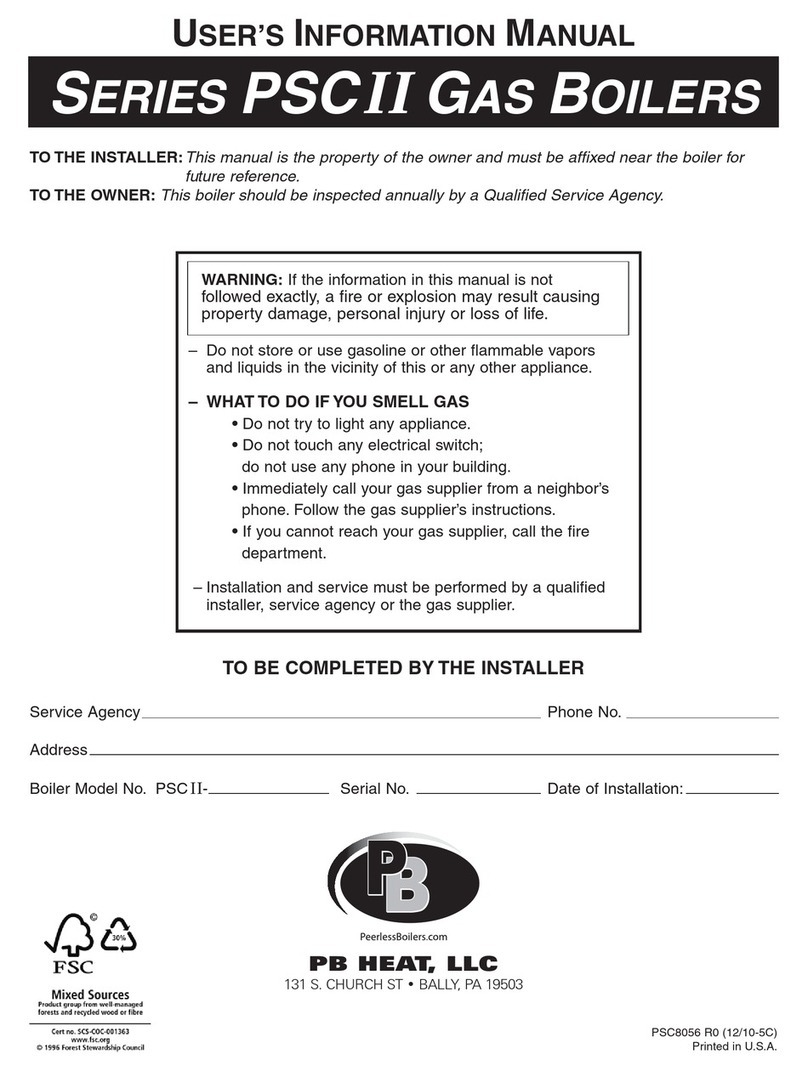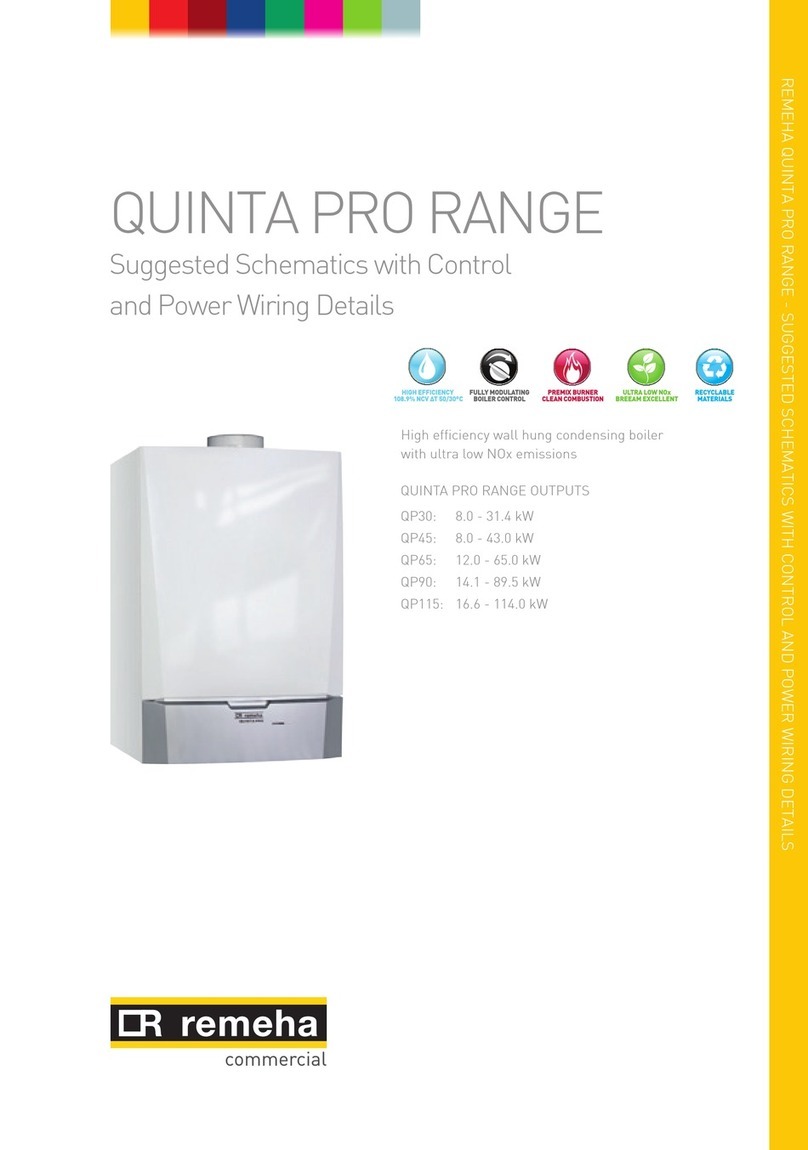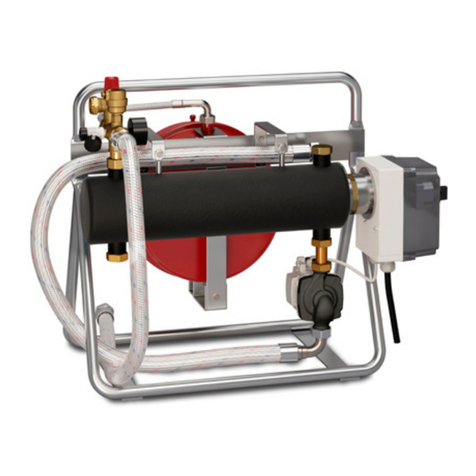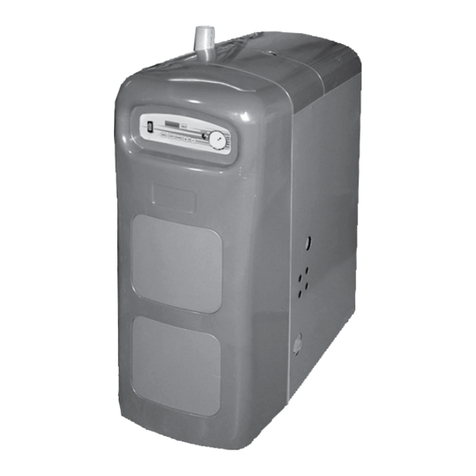3
- Should overheating occur or the gas supply fails to shut off, do not turn off or disconnect the
electrical supply to the pump. Instead, shut off the gas supply at a location external to the appliance.
- Do not use this boiler if any part has been under water. Immediately call a qualified service
technician to inspect the boiler and to replace any part of the control system and any gas control
which has been under water.
- Do not start the burner unless all cleanout doors are secured in place.
- Never burn garbage or paper in the unit, and never leave combustible material around it.
- En cas de surchauffe ou de l'alimentation en gaz ne se coupe pas, ne pas éteindre ou déconnecter
l'alimentation électrique de la pompe. Au lieu de cela, couper l' alimentation en gaz à un endroit
extérieur à l'appareil.
- Ne pas utiliser cette chaudière si une partie quelconque a été submergée. Appelez immédiatement
un technicien de service qualifié pour inspecter la chaudière et remplacer toute pièce du système de
contrôle et toute commande de gaz qui a été sous l'eau.
- Ne pas démarrer le brûleur à moins que toutes les portes de ramonage sont maintenues en place.
- Ne jamais brûler de déchets ou de papier dans l'unité , et ne laissez jamais des matériaux
combustibles autour d'elle.
WARNING
Product Safety Information
Refractory Ceramic Fiber Product
This appliance contains materials made from refractory ceramic fibers (RCF). Airborne RCF,
when inhaled, have been classified by the International Agency for Research on Cancer (IARC),
as a possible carcinogen to humans. After the RCF materials have been exposed to
temperatures above 1800°F (980°C), they can change into crystalline silica, which has been
classified by the IARC as carcinogenic to humans. If particles become airborne during service
or repair, inhalation of these particles may be hazardous to your health.
Avoid Breathing Fiber Particulates and Dust
Suppliers of RCF recommend the following precautions be taken when handling these materials:
Precautionary Measures:
Provide adequate ventilation.
Wear a NIOSH/MSHA approved respirator.
Wear long sleeved, loose fitting clothing and gloves to prevent skin contact.
Wear eye goggles.
Minimize airborne dust prior to handling and removal by water misting the material and
avoiding unnecessary disturbance of materials.
Wash work clothes separately from others. Rinse washer thoroughly after use.
Discard RCF materials by sealing in an airtight plastic bag.
First Aid Procedures:
Inhalation: If breathing difficulty or irritation occurs, move to a location with fresh clean air.
Seek immediate medical attention if symptoms persist.
Skin Contact: Wash affected area gently with a mild soap and warm water. Seek immediate
medical attention if irritation persists.
Eye Contact: Flush eyes with water for 15 minutes while holding eyelids apart. Do not rub eyes.
Seek immediate medical attention if irritation persists.
Ingestion: Drink 1 to 2 glasses of water. Do not induce vomiting. Seek immediate medical attention.
WARNING
